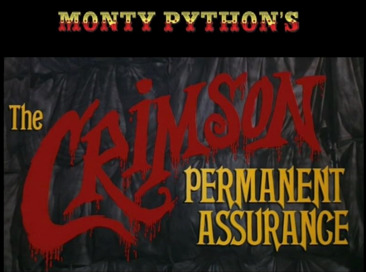Text

Holy Cow I just got TM13COL in FRANCE on 5 watts!
The power of Morse code still cutting through!
0 notes
Text

Dad heard them calling on 80m and sent a text... probably the 3rd SSB contact I've made on this rig... I did hear him (N2NRA) call and make contact too right after me.
QRP when you care enough to send the very least! That's why I stick to CW!
Update... dialed down band and caught him working Morse Code! Got N2NRA sandwiched and I'm in the special event log twice...
1 note
·
View note
Text

Well, 13 Colonies is rocking still.
Heard France for the bonus but what a mob and the 20m folks have all drifted into 40m now and it's just a mob scene!
Thank you to all the 1x1 special ops operators dealing with this mayhem!
1 note
·
View note
Text
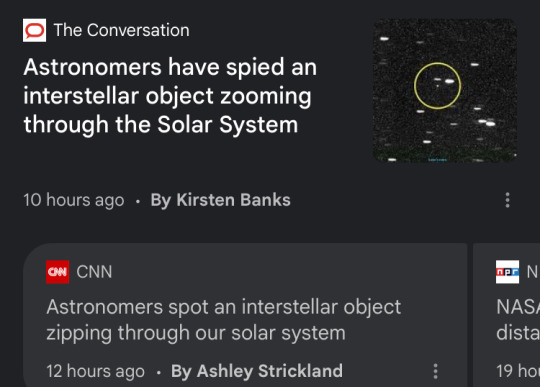
Anybody else have their thumbs out? It is summer. I suppose the Vogon’s could be coming to pick up the construction job. …
9 notes
·
View notes
Text

8 notes
·
View notes
Text

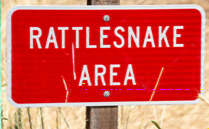





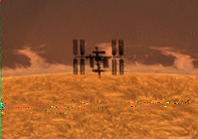

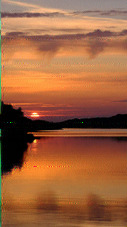

@swradiogram Great reception tonight in southern tier NY. 9265kHz at 2330z
Welcome to program 408 of Shortwave Radiogram.
I'm Kim Andrew Elliott in Arlington, Virginia USA.
Here is the lineup for today's program, in MFSK modes as noted:
1:42 MFSK32: Program preview (now) 2:54 MFSK32: Court orders USAGM to release funds for RFE/RL 6:46 MFSK64: How does a country shut down the internet? 11:23 MFSK64: This week's images 28:37 MFSK32: Closing announcements
Please send reception reports to [email protected]
And visit http://swradiogram.net
We're on Bluesky now: SWRadiogram.bsky.social
And X/Twitter: @SWRadiogram
Radio Free Europe/Radio Liberty press release:
In Latest Legal Win, US District Court Orders USAGM to Release RFE/RL Funding for June
July 2, 2025
(WASHINGTON) — Judge Royce Lamberth of the U.S. District Court for the District of Columbia has once again granted Radio Free Europe/Radio Liberty (RFE/RL)'s request for a temporary restraining order in its lawsuit against the U.S. Agency for Global Media (USAGM).
In his ruling, the judge ordered USAGM to immediately disburse RFE/RL's congressionally appropriated funds for the month of June, concluding that USAGM "has no intention of negotiating with RFE/RL or ever distributing the congressionally appropriated funds absent court intervention."
The ruling comes as RFE/RL marks the 75th anniversary of its first test broadcast to audiences behind the Iron Curtain in Czechoslovakia on July 4, 1950.
RFE/RL President and CEO Stephen Capus said: "This ruling is the latest in a series of significant legal victories compelling USAGM to release funding necessary for our vital work. RFE/RL's value has been proven time and again throughout its 75-year history, most recently during the latest crisis in the Middle East, when millions of Iranians flocked to our timely, accurate coverage as hostilities erupted in the region, bypassing Tehran's state-sponsored propaganda. We remain ready as ever to enter into direct and constructive discussions with USAGM leadership to ensure that RFE/RL can continue to carry out its congressionally mandated mission."
Shortwave Radiogram now changes to MFSK64 …
Before RSID: <<2025-07-03T23:37Z MFSK-32 @ 9265000+1500>>
This is Shortwave Radiogram in MFSK64
Please send your reception report to [email protected]
From The Conversation:
Iran's internet blackout left people in the dark. How does a country shut down the internet?
Mohiuddin Ahmed Paul Haskell-Dowland Edith Cowan University (Australia) June 23, 2025
In recent days, Iranians experienced a near-complete internet blackout, with local service providers – including mobile services – repeatedly going offline. Iran's government has cited cyber security concerns for ordering the shutdown.
Shutting off the internet within an entire country is a serious action. It severely limits people's ability to freely communicate and to find reliable information during times of conflict.
In countries that have privatised mobile and internet providers, control is often exercised through legislation or through government directives – such as age restrictions on adult content. By contrast, Iran has spent years developing the capacity to directly control its telecommunications infrastructure.
So how can a country have broad control over internet access, and could this happen anywhere in the world?
How does 'blocking the internet' work?
The "internet" is a broad term. It covers many types of applications, services and, of course, the websites we're familiar with.
There's a range of ways to control access to internet services, but broadly speaking, there are two "simple" methods a nation could use to block citizens' internet access. Understand new developments in science, health and technology, each week
Hardware
A nation may opt to physically disconnect the incoming internet connectivity at the point of entry to the country (imagine pulling the plug on a telephone exchange).
This allows for easy recovery of service when the government is ready, but the impact will be far-reaching. Nobody in the country, including the government itself, will be able to connect to the internet – unless the government has its own additional, covert connectivity to the rest of the world.
Software and configuration
This is where it gets more technical. Every internet-connected endpoint – laptop, computer, mobile phone – has an IP (internet protocol) address. They're strings of numbers; for example, 77.237.87.95 is an address assigned to one of the internet service providers in Iran.
IP addresses identify the device on the public internet. However, since strings of numbers are not easy to remember, humans use domain names to connect to services – theconversation.com is an example of a domain name.
That connection between the IP address and the domain is controlled by the domain name system or DNS. It's possible for a government to control access to key internet services by modifying the DNS – this manipulates the connection between domain names and their underlying numeric addresses.
An additional way to control the internet involves manipulating the traffic flow. IP addresses allow devices to send and receive data across networks controlled by internet service providers. In turn, they rely on the border gateway protocol (BGP) – think of it like a series of traffic signs which direct internet traffic flow, allowing data to move around the world.
Governments could force local internet service providers to remove their BGP routes from the internet. As a result, the devices they service wouldn't be able to connect to the internet. In the same manner, the rest of the world would no longer be able to "see" into the country.
How common is this?
In dozens of countries around the world, the internet is either routinely controlled or has been shut down in response to major incidents.
A recent example is a wide-scale internet blackout in Bangladesh in July 2024 during student-led protests against government job quotas.
In 2023, Senegal limited internet access to handle violent protests that erupted over the sentencing of a political leader. In 2020, India imposed a lengthy internet blackout on the disputed Himalayan region of Kashmir. In 2011, the Egyptian government withdrew BGP routes to address civil unrest.
These events clearly show that if a government anywhere in the world wants to turn off the internet, it really can. The democratic state of the country is the most significant influence on the willingness to undertake such action – not the technical capability.
However, in today's world, being disconnected from the internet will heavily impact people's lives, jobs and the economy. It's not an action to be taken lightly.
How can people evade internet controls?
Virtual private networks or VPNs have long been used to hide communications in countries with strict internet controls, and continue to be an effective internet access method for many people. (However, there are indications Iran has clamped down on VPN use in recent times.)
However, VPNs won't help when the internet is physically disconnected. Depending on configuration, if BGP routes are blocked, this may also prevent any VPN traffic from reaching the target.
This is where independent satellite internet services open up the most reliable alternative. Satellite internet is great for remote and rural areas where traditional internet service providers have yet to establish their cabling infrastructure – or can't do so.
Even if traditional wired or wireless internet connections are unavailable, services such as Starlink, Viasat, Hughesnet and others can provide internet access through satellites orbiting Earth.
To use satellite internet, users rely on antenna kits supplied by providers. In Iran, Elon Musk's Starlink was activated during the blackout, and independent reports suggest there are thousands of Starlink receivers secretly operating in the country.
This is Shortwave Radiogram in MFSK64
Please send your reception report to [email protected]
This week's images …
The sun setting over Loch Shieldaig, Scotland. tinyurl.com/2a5vnkk2 …
A close view of a Mediterranean sea slug near La Herradura, Spain. tinyurl.com/268l9n48 …
The International Space Station transiting the sun. tinyurl.com/2xqwqkjk …
Flamingos and their reflections on Lake Tuz, near Ankara, Türkiye. tinyurl.com/2ab5hwoc …
Broad-leaved Sweet Pea blooming in Mount San Jacinto State Park, California, June 21. tinyurl.com/24zzh6pn …
The neon (or maybe LED faux neon) sign of Osborne's Modern Cleaners in Portsmouth, Ohio. tinyurl.com/243betrn …
The yellow flower, and some sharp spines, of a prickly pear, at Tyler Arboretum in Media, Pennsylvania. tinyurl.com/2cbd32jj …
A Western Tanager at Mueller State Park, Colorado. tinyurl.com/2yko54z7 …
Enjoy the scenery, but watch your step, at Palouse Falls State Park in eastern Washington state. tinyurl.com/29notwh9 …
Our painting of the week is "Awaiting Adventure" by Ronda Fischer. tinyurl.com/2xthnb2t …
Shortwave Radiogram returns to MFSK32 …
Before RSID: <<2025-07-03T23:58Z MFSK-64 @ 9265000+1500>>
This is Shortwave Radiogram in MFSK32 …
Transmission of Shortwave Radiogram is provided by:
WRMI, Radio Miami International, http://wrmi.net
and
WINB Shortwave, http://winb.com
Please send reception reports to [email protected]
And visit http://swradiogram.net
http://swradiogram.bsky.social
X/Twitter (for now): @SWRadiogram
I'm Kim Elliott. Please join us for the next Shortwave Radiogram.
2 notes
·
View notes
Text
Entry received at: 2025-07-01 00:01:56
Call Used: N2QFD GOTA Station Call: (NONE) ARRL/RAC Section: WNY Class: 1D
Participants: 1 Club/Group Name: (none)
Power Source(s): Commercial
Power Multiplier: 2X
Preliminary Total Score: 202
Bonus Points:
Social media 100
Entry submitted via web 50
Total bonus points 150
-Not too bad for not trying!
1 note
·
View note
Text

Well 13 stations isn't bad for not really trying on this 20205 Field Day.
Mostly CW but a few PSK31's in there. QRP naturally... This year we were a 1D (normal home station) I couldn't be bothered to take my gear outside and hook up battery this time. Still nice weekend event and loads of radio-activity to be had by all.
2 notes
·
View notes
Text
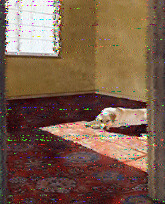
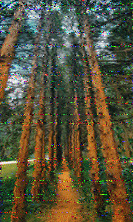
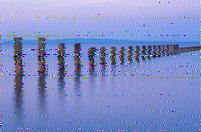

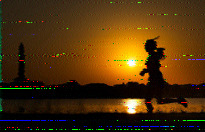

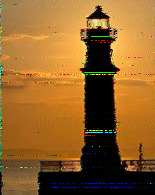




9455 kHz @ 2300z into the Southern Tier of NY received with Xeigu G106 and G5RV antenna at 25 ish feet above gound level. @swradiogram Field Day break.
Welcome to program 407 of Shortwave Radiogram.
I'm Kim Andrew Elliott in Arlington, Virginia USA.
Here is the lineup for today's program, in MFSK modes as noted:
1:42 MFSK32: Program preview (now) 2:54 MFSK32: Trump administration lays off hundreds at VOA 6:17 MFSK64: Two spacecraft to study Martian ionosphere 8:48 MFSK64: This week's images 27:51 MFSK32: Closing announcements
Please send reception reports to [email protected]
And visit http://swradiogram.net
We're on Bluesky now: SWRadiogram.bsky.social
And X/Twitter: @SWRadiogram
From Deutsche Welle:
Trump administration lays off hundreds at Voice of America
Weley Dockery and agencies June 21, 2025
The Trump administration on Friday laid off 639 employees at US public broadcaster Voice of America (VoA) and its parent organization, the United States Agency for Global Media (USAGM).
VoA was established in World War II and aims much of its programming at countries under authoritarian regimes such as North Korea and Iran.
Kari Lake, a former television anchor and Trump ally who serves as the senior advisor to the USAGM, said the cuts are part of a "long overdue effort to dismantle a bloated, unaccountable bureaucracy."
Some 1,400 people have been fired at VoA and USAGM since March, Lake said. Many VOA staff have been on administrative leave since March 15 amid legal proceedings.
Trump has attacked publicly-funded news outlets such as VoA and National Public Radio (NPR), claiming without concrete evidence that their programming is biased toward conservatives.
Update: June 21, 2025 …
VOA cuts met with backlash from employees, Democrats
The latest cuts to VOA were met with fierce criticism from employees of the outlet and congressional Democrats.
VOA employees Jessica Jerreat, Kate Neeper and Patsy Widakuswara are involved in a legal battle against Trump's cuts to the news outlet and US-funded public media. Jerreat, Neeper and Widakuswara were among those laid off on Friday.
"It spells the death of 83 years of independent journalism that upholds US ideals of democracy and freedom around the world," Jerreat, Neeper and Widakuswara said in a statement in response to the latest cuts.
In a post on X, Democratic Senator Jeanne Shaheen of New Hampshire strongly condemned the cuts. Jeanne Shaheen is the ranking member on the Senate Foreign Relations Committee.
Shaheen said the "decimation of US broadcasting leaves authoritarian propaganda unchecked by US backed independent media and is a perversion of hte law and congressional intent."
"It is a dark day for the truth," Shaheen said.
Shortwave Radiogram now changes to MFSK64 …
Before RSID: <<2025-06-28T23:06Z MFSK-32 @ 9455000+1500>>
This is Shortwave Radiogram in MFSK64
Please send your reception report to [email protected]
From Eos (American Geophysical Union):
Orbiter Pair Expands View of Martian Ionosphere Radio signals sent between two Mars orbiters -- rather than between an orbiter and an Earth-based receiver -- capture new insights into atmospheric dynamics.
by Sarah Stanley 20 June 2025
Like Earth, Mars is surrounded by an ionosphere -- the part of its upper atmosphere where radiation from the Sun knocks electrons off of atoms and molecules, creating charged particles. The Martian ionosphere is complex and continuously changes over the course of the day, but its role in atmospheric dynamics and radio communication signals means understanding it is key for Mars exploration.
One way to study the Martian ionosphere is with radio occultation, in which a spacecraft orbiting Mars sends a radio signal to a receiver on Earth. When it skims across the Martian ionosphere, the signal bends slightly. Researchers can measure this refraction to learn about Martian ionospheric properties such as electron density and temperature. However, the relative positions of Mars, Earth, and the Sun mean conventional radio occultation cannot measure the middle of the Martian day.
Now, Parrot et al deepen our understanding of the Martian ionosphere using an approach called mutual radio occultation, in which the radio signal is sent not from an orbiter to Earth but between two Mars orbiters. As one orbiter rises or sets behind Mars from the other's perspective, the signal passes through the ionosphere and refracts according to the ionosphere's properties.
The researchers analyzed 71 mutual radio occultation measurements between two European Space Agency satellites orbiting Mars: Mars Express and the ExoMars Trace Gas Orbiter. Thirty-five of these measurements were taken closer to midday than was ever previously achievable, in effect allowing scientists to see a new part of the Martian ionosphere.
The new data enabled the research team to calculate how the ionosphere's electron density changes throughout the day. They were also able to learn more about how the altitudes of the upper and lower layers of the ionosphere -- called M2 and M1, respectively -- vary daily. The new data suggest that the peak electron density of the M2 layer changes less dramatically during the day than has been suggested by prior research. The data also show that the M1 does, indeed, still exist during the midday, contradicting previous assumptions.
The researchers also used the new data to calculate ionospheric temperatures. They found that instead of being hottest at midday, temperatures in the ionosphere rise as the Sun reaches Martian sunset. Simulations using a Mars climate model suggest that it is likely winds transporting air, rather than the Sun's direct heat, that control these temperature dynamics.
See also: https://agupubs.onlinelibrary.wiley.com/doi/10.1029/2024JE008854
This is Shortwave Radiogram in MFSK64
Please send your reception report to [email protected]
This week's images …
A pheasant in Bursa, Turkey, among fields of wild lavender. tinyurl.com/2xmlhax9 …
A black and white marble floor from a UK supplier. tinyurl.com/25zfz6zv …
A Bowl of Beauty Peony at the Univerity of Michigan's Nichols Arboretum in Ann Arbor. tinyurl.com/2dgmneh6 …
Sunrise over Edinburgh as seen from Bo'ness, Scotland. tinyurl.com/222q6nb9 …
The sun behind Newhaven Lighthouse in Edinburgh makes it look like its lamp is illuminated. tinyurl.com/222q6nb9 …
Sunrise with boats at Gosport, England. tinyurl.com/26gmhj3s …
A jogger along the George Washington Memorial Parkway at sunrise in Arlington, Virginia, June 24. tinyurl.com/28x5yhyf
A turtle finds relief from the heat in a pond at the Tyler Arboretum, Media, Pennsylvania. tinyurl.com/2ar3d83f …
A wooden sea defence at dawn near Saltcoats in North Ayrshire, Scotland. tinyurl.com/222q6nb9 …
A walking trail in Nairbobi, Kenya. tinyurl.com/2588yqcj …
Our painting of the week is "Moving Day" (detail) by Sue Ellen Ross (American, b. 1941). tinyurl.com/29btvalw …
Shortwave Radiogram returns to MFSK32 …
Before RSID: <<2025-06-28T23:27Z MFSK-64 @ 9455000+1500>>
This is Shortwave Radiogram in MFSK32 …
Transmission of Shortwave Radiogram is provided by:
WRMI, Radio Miami International, http://wrmi.net
and
WINB Shortwave, http://winb.comH t
3 notes
·
View notes
Text
So… WRMI Miami International had a schedule issue and started broadcasting a religious show instead of the radiogram tonight…. Hoping to catch it Saturday and post it if we’re not under thunderstorms.
In other-news on 9455 kHz at 2320z tonite there was some lovely Italian music. Sounded like a ballad from the 40’s? I don’t know know enough to say what it was about but a lovely song on a humid June evening coming in via shortwave on a mono speaker much like it probably did many years before.
Stay RaDio-AcTiVe and remember Field Day is this weekend. It’ll be a great day to stop by local ham radio clubs.
Here’s a link to find clubs having open house.
https://www.arrl.org/field-day-locator
Shortwave Radiogram, 26 June-2 July 2025 (program 407): Digital modes to the Martian ionosphere
Thank you for your patience last week, when the preview email and web post were a couple of days late. This was due to a 36-hour power failure here at the house, caused by a heavy thunderstorm on June 19. Amazingly, all of my amateur radio antennas survived. We might get weather again today, as I write this, but I think it will be uploaded before any encore power failure occurs. Like many of you, we are coming off of four days with temperatures at or near 100F/38C, so some relief would be pleasant. This week's show will include more bad news about the Voice of America and US international broadcasting. For plenty of information about these developments, visit #SaveVOA and its various social media outlets. And shop at their store. A video of last week's Shortwave Radiogram (program 406) is provided by Scott in Ontario (Wednesday 1330 UTC). The audio archive is maintained by Mark in the UK. Analysis is provided by Roger in Germany. Here is the lineup for Shortwave Radiogram, program 407, 26 June-2 July 2025 2025, in MFSK modes as noted: 1:42 MFSK32: Program preview 2:54 MFSK32: Trump administration lays off hundreds at VOA 6:17 MFSK64: Two spacecraft to study Martian ionosphere 8:48 MFSK64: This week's images 27:51 MFSK32: Closing announcements Please send reception reports to [email protected] And visit http://swradiogram.net Bluesky: swradiogram.bsky.social or https://swradiogram.bsky.social Twitter: @SWRadiogram or https://twitter.com/swradiogram (visit during the weekend to see listeners’ results) Facebook group: https://www.facebook.com/groups/567099476753304 Shortwave Radiogram Gateway Wiki: https://wiki.radioreference.com/index.php/Shortwave_Radiogram_Gateway THE SHORTWAVE RADIOGRAM TRANSMISSION SCHEDULE IS IN THE IMAGE IMMEDIATELY BELOW. IF THE IMAGE DOES NOT DISPLAY FULL WIDTH, CLICK ON IT.
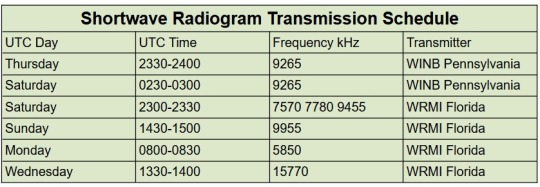
Other Shortwave broadcast programs that include digital text and images include The Mighty KBC (updated schedule here), Pop Shop Radio and Radio North Europe International (RNEI). Links to these fine broadcasts, with schedules, are posted here.
Bobby in Louisiana received these images 19 June 2025, 2330-2400 UTC, 9265 kHz from WINB Pennsylvania ...

3 notes
·
View notes
Text
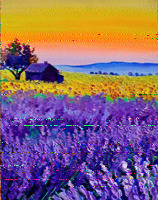

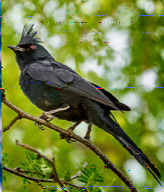

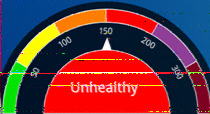


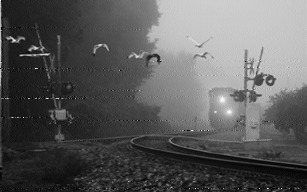


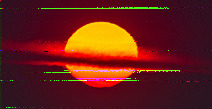
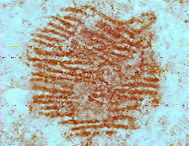
================================================
@swradiogram
9455 khz 2300z good signals tonight into STNY!
Welcome to program 406 of Shortwave Radiogram.
I'm Kim Andrew Elliott in Arlington, Virginia USA.
Here is the lineup for today's program, in MFSK modes as noted:
1:40 MFSK32: Program preview (now) 2:52 MFSK32: Voice of America reactivates Persian service 5:07 MFSK64: Neandertal fingerprint has been found in Spain 10:09 MFSK64: This week's images 28:28 MFSK32: Closing announcements
Please send reception reports to [email protected]
And visit http://swradiogram.net
We're on Bluesky now: SWRadiogram.bsky.social
And X/Twitter: @SWRadiogram
From Radioinfo Asia:
Voice of America abruptly reactivates Persian service amid Israel-Iran conflict
18 June 2025
The US government-funded Voice of America has suddenly recalled its Persian-language staff from administrative leave, the US Agency for Global Media said on [June 13].
Several dozen employees, sidelined since March under a directive from the Trump administration, were told to return to work "effective immediately" to boost Farsi programming amid the Israel–Iran crisis.
The recall represents a significant reversal for the broadcaster, which had its operations drastically reduced when the Trump administration implemented major cutbacks in March 2025.
Prior to the March cutbacks, VOA broadcast four or more hours of "Persian-language programming to Iran" every day.
The VOA website said the content "confronts the disinformation and censorship efforts of the Iranian regime and enhances U.S. efforts to speak directly to the Iranian people and the global Persian-speaking diaspora."
It is unclear how much content VOA has been beaming into Iran in recent weeks. The broadcaster's VOA Farsi channel on YouTube showed eight new videos since Israel struck inside Iran early [June 13].
Shortwave Radiogram now changes to MFSK64 …
Before RSID: <<2025-06-21T23:05Z MFSK-32 @ 9455000+1500>>
This is Shortwave Radiogram in MFSK64
Please send your reception report to [email protected]
From Science News:
A 43,000-year-old Neandertal fingerprint has been found in Spain
By Javier Barbuzano June 10, 2025
In a rugged landscape in central Spain, archaeologists have discovered a unique granite cobblestone marked with a red ochre dot that preserves the mark of a Neandertal fingerprint. Dating back approximately 43,000 years, it could be the oldest and most complete Neandertal fingerprint ever identified.
Roughly 20 centimeters long, the rock bears a resemblance to a human face, with the ochre dot where a nose might be, researchers report May 24 in Archaeological and Anthropological Sciences. This arrangement, the scientists say, suggests it's a case of pareidolia -- the tendency to perceive familiar shapes, such as faces, in random objects. It's possible the likeness inspired the Neandertal who placed the pigment there.
The stone was excavated in the summer of 2022 at Abrigo de San Lázaro, a Paleolithic rock shelter carved into dolomite cliffs overlooking the Eresma River. It emerged from a sediment layer precisely dated to 43,000 and 42,000 years ago through radiocarbon analysis of organic material. That's near the end of Neandertal history.
The rock appeared with the red dot facing upward, in a layer with few other stones, most showing signs that they were once used as hammering tools. It quickly attracted the archaeologist's interest because it was larger than any other stone in the layer, "and from the first moment, we saw that it had a red dot," says David Álvarez Alonso, an historian and archaeologist at the Complutense University in Madrid.
Intrigued by the dot's precision and placement, the team first confirmed that it wasn´t a natural feature of the rock through a mineralogical analysis. They hypothesized the dot may have been made by dipping a fingertip into a mixture of the natural pigment ochre and water, then pressing it to the rock. To test the idea, the team consulted forensic specialists at Spain's national police.
Puzzled by the request, the forensic specialists were initially skeptical of their ability to solve such a cold case, Álvarez Alonso says. But multispectral imaging -- a technique that examines surfaces under different wavelengths of light -- revealed fingerprint ridges, showing the print was made as the ochre was applied.
The shape suggests it was likely made with the tip of a finger, though it's unclear which one. Based on comparisons to fingerprint databases, the most probable match is an adult male, rather than a woman or child.
Unlike incidental prints left on objects such as resin balls found in Germany -- probably during toolmaking -- this print appears intentional. The placement of the dot, combined with the lack of obvious utility for the rock, suggests a symbolic purpose, the researchers say.
It is impossible to determine the painter's intention, Álvarez Alonso says. But in a context where rocks were used as tools, to him it's clear the person who marked this one was conferring it a different meaning.
This interpretation contributes to an ongoing reevaluation of Neandertal cognitive abilities. For much of the last century, Neandertals were viewed as lacking symbolic thought -- a trait thought to separate them from modern humans. But over the past two decades, discoveries such as painted seashells and pendants, have eroded that distinction.
Some of the most compelling evidence comes from the painted caves of southern Spain -- such as Ardales and Maltravieso -- where Neandertals made geometric patterns and hand stencils roughly 20,000 years before Homo sapiens arrived in the region. Although those markings lack the vivid imagery of later Upper Paleolithic art, produced between 40,000 and 10,000 years ago, the work's symbolic intent is becoming increasingly accepted.
"This is a beautiful and original study," says archaeologist José Ramos-Muñoz of the University of Cadiz, Spain, who was not involved in the research. "The oldest art consists of dots, lines and smudges," he says, and more evidence of that keeps appearing. "This is another data point in the same direction."
Image: Red pigment on a rock in Spain revealed an embedded fingerprint.
This is Shortwave Radiogram in MFSK64
Please send your reception report to [email protected]
This week's images …
The sun rose through clouds, with the result looking somewhat like Saturn. York Beach, Maine, June 13. tinyurl.com/237ulx2g …
Intense rainbow in Potomac, Maryland, after a heavy rain, June
tinyurl.com/2aewdphw …
A Pieris rapae butterfly flies towards a flower in a field in Soultz-Haut-Rhin, France. tinyurl.com/28zo3utv …
A northbound train approaches a crossing in central Florida. tinyurl.com/23lwx67a …
This Erin Rachel hibiscus bloomed June 17 in Silicon Valley. tinyurl.com/2b2ajgwl …
Smoky sunset at Roque Bluffs State Park in Machias, Maine. tinyurl.com/288kejll …
On June 14, the Air Qualty Index (AQI)in the Washington DC area was 151 -- unhealthy -- due to wildfire smoke from New Jersey. tinyurl.com/22w49cum …
Sunrise at Reagan National Airport in Washington DC, June 12. tinyurl.com/23ew7f35 …
A Phainopepla at the Boyce Thompson Arboretum in Superior, Arizona. tinyurl.com/2amoz37r …
A ladybug (ladybird) at the Tyler Arboretum in Media, Pennsylvania. tinyurl.com/299sl4jl …
Our painting of the week is “Provence lavender” by Anastasia Trusova (Russian based in Belgium, b. 1989). tinyurl.com/2detwccv …
Shortwave Radiogram returns to MFSK32 …
Before RSID: <<2025-06-21T23:28Z MFSK-64 @ 9455000+1500>>
This is Shortwave Radiogram in MFSK32 …
Transmission of Shortwave Radiogram is provided by:
WRMI, Radio Miami International, http://wrmi.net
and
WINB Shortwave, http://winb.com
Please send reception reports to [email protected]
And visit http://swradiogram.net
http://swradiogram.bsky.social
X/Twitter (for now): @SWRadiogram
I'm Kim Elliott. Please join us for the next Shortwave Radiogram.
3 notes
·
View notes
Text

NAQCC mW sprint was Tuesday nite. Wish I could have really worked the event but bedtime comes too early when you get up at 0430.
So, not a lot of bug operators in the flea power event. In amateur radio we generally break up stations by power class. .0001 - 1 Watt is a QRPp station, 1-5 watts is QRP (low power) and 6-100 watts QRO is normal operating power range. Then people do get amplifiers and run up to 500 watts. There’s no Q sign I know to describe this above normal power range.
The event was a 1 watt or less Sprint. The idea being that club members try to make as many contacts in the allotted time (2 hrs) as they can, preferably with other club members. NAQCC is the North American QRP CW Club so low power Morse Code across the northern quadrant of the western hemisphere. Exchange signal info (RST) state, and member number or wattage if non member.
I caught a guy in Illinois with 500 mW or half a watt on 40m (7mHz) and it was the first time running low power setting. My radio is a low power set by design and puts out 5 watts max! So when I saw low was 10% max I thought, let’s do this! I’ve made better than 1000 miles to the watt contacts. Well he was 560 some miles away so by ratio we did it again!
2 notes
·
View notes
Text

Test transmission of Olivia 64-2K on Mighty KBC
2 notes
·
View notes
Text
4 notes
·
View notes

